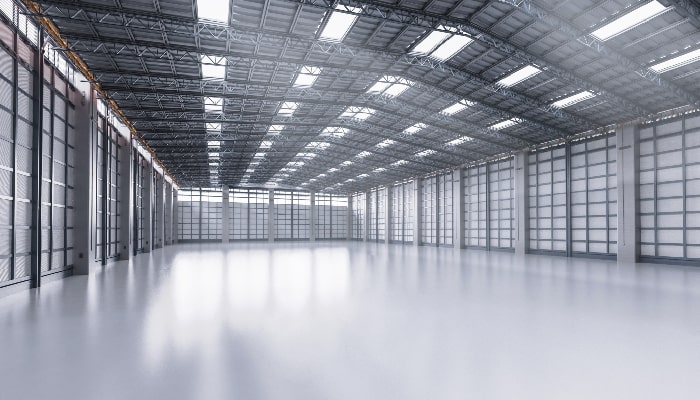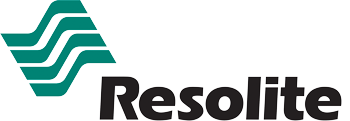In the bustling heart of a city, as cranes stretch towards the sky and the rhythmic symphony of hammers and drills fills the air, there lies an intricate dance of numbers, budgets, and financial forecasts. The world of construction, with its towering structures and sprawling complexes, is as much about bricks and mortar as it is about controlling costs.
Every construction project begins with a vision—a dream of what could be. But intertwined with this vision is the ever-present reality of budgets. These budgets, carefully crafted based on market conditions, client expectations, and economic forecasts, act as the guiding star. Straying too far from this financial compass can lead a project into treacherous waters, where halted work and unfinished structures loom like ominous shadows.
In this dynamic landscape, a construction company’s reputation becomes its most valuable asset. Clients, after all, are entrusting more than just money; they’re handing over dreams, hopes, and often, their life’s savings. Delivering a project within the stipulated budget is a silent promise kept, a testament to reliability. Over time, this trust solidifies into a reputation, opening doors to new opportunities and cementing a company’s place in the industry. Conversely, cost overruns can become blemishes, hard to erase and even harder to recover from.
The global economy, with its unpredictable ebbs and flows, adds another layer of complexity. A sudden economic downturn, a spike in interest rates, or an unforeseen global event can send ripples through the construction sector. Material costs might soar, labor might become scarce, and financial projections might go awry. It’s in these challenging times that the true essence of cost control shines through. It becomes the anchor, holding projects steady amidst turbulent economic seas, ensuring that visions are realized even when the financial landscape shifts.
But cost control is not just about navigating challenges; it’s also about embracing opportunities. It fosters a culture of innovation, where the quest for efficiency leads to groundbreaking methods and materials. Companies begin to seek out advanced technologies, explore sustainable building practices, and champion innovative designs—all in a bid to deliver exceptional value without inflating costs.
The construction industry is perpetually evolving, with innovations and advancements driving down costs while enhancing the quality and durability of structures. One of the most significant shifts in recent times has been the adoption of modern construction materials. These materials, characterized by their efficiency, sustainability, and cost-effectiveness, are revolutionizing the way we build. In this article, we’ll explore how embracing these materials can significantly reduce construction costs.
1. Fiberglass Reinforced Plastic (FRP)
Fiberglass Reinforced Plastic (FRP) panels are composite materials made by combining fine fibers of glass with a polymer matrix, usually a type of resin. This fusion results in a lightweight yet incredibly durable material that boasts high strength and resistance to corrosion, moisture, and impact. Often used in construction for their versatility, FRP panels provide a cost-effective solution for walls, ceilings, and other surfaces, especially in environments that require easy-to-clean, sanitary, or moisture-resistant finishes. They are one of the best ways to reduce construction costs. Their non-porous nature and ability to withstand a range of environmental conditions make them a preferred choice in various industries, from food processing plants to healthcare facilities. Their lightweight nature reduces transportation and installation costs. Additionally, their longevity means fewer replacements and repairs, leading to long-term savings.
Glasteel: The Synthesis of Durability and Versatility
Glasteel, a leading manufacturer under the Stabilit America umbrella, offers a vast range of fiberglass reinforced plastic, polycarbonate, and PVC panels. Their products are tailored for both indoor and outdoor applications, providing contractors with versatile solutions that cater to various construction needs. The durability of Glasteel’s products ensures longevity, reducing the frequency of replacements and associated costs.
Resolite: The Vanguard of FRP Products
Resolite, a business unit of Stabilit America, stands at the forefront of FRP technology. Established in 1951, Resolite has consistently provided the construction industry with top-tier FRP panels. Recognized for its contributions to industrial roof and wall construction, Resolite’s products are synonymous with quality and performance.
2. Polycarbonate: The Transparent Marvel
Polycarbonate, a versatile thermoplastic, has emerged as a game-changer in the realm of construction, offering a plethora of cost-saving advantages. Its inherent lightweight nature simplifies transportation and installation, reducing labor and logistical expenses. The material’s durability and resistance to UV rays, weathering, and impact mean fewer replacements and maintenance costs over time. Furthermore, polycarbonate’s excellent insulating properties can lead to significant energy savings, especially when used in roofing or cladding, by moderating indoor temperatures and reducing reliance on heating or cooling systems. Additionally, its ability to allow natural light penetration can decrease the need for artificial lighting during daytime hours, further trimming energy bills. All these factors combined make polycarbonate a cost-effective choice for modern construction endeavors.
Macrolux USA: Pioneering Polycarbonate Solutions
Macrolux USA, another subsidiary of Stabilit America, specializes in high-strength polycarbonate panels. These panels, available in various colors and thicknesses, cater to diverse light transmission and heat reduction needs. Polycarbonate panels, especially the multi-wall variety, offer excellent insulation, reducing energy costs. Their ability to allow natural light reduces the need for artificial lighting, further driving down energy bills.
3. Sustainability: An Investment in the Future
Sometimes looking for ways to reduce construction costs involves thinking about the future. More and more, the environmental footprint of construction projects is considered a “cost” of sorts. Modern construction materials like FRP and polycarbonate are not only cost-effective but also environmentally friendly. Their production processes have a lower carbon footprint compared to traditional materials. Moreover, their energy-saving properties, such as insulation, contribute to a reduction in energy consumption, benefiting both the environment and the wallet.
4. Reduced Maintenance Costs
One of the hidden benefits of using modern materials is the reduction in maintenance costs. Traditional materials might require regular upkeep, treatments, or repairs due to wear and tear or environmental factors. In contrast, materials like FRP and polycarbonate are resistant to corrosion, UV rays, and other environmental stressors, leading to minimal maintenance.
5. Streamlined Construction Process
The lightweight nature of modern materials simplifies the construction process. Easier transportation, handling, and installation translate to faster project completion times and reduced labor costs.
6. Enhanced Safety and Reduced Liabilities
Modern construction materials prioritize safety. For instance, polycarbonate’s impact resistance reduces the risk of breakage, while FRP’s fire-resistant properties can prevent the spread of fires. Enhanced safety can lead to reduced insurance premiums and liabilities.
Conclusion
The construction industry is at a pivotal juncture, with modern materials offering a pathway to cost reduction without compromising on quality, durability, or aesthetics. By embracing products from pioneers like Resolite, Macrolux USA, and Glasteel, contractors and builders can not only reduce immediate costs but also ensure long-term savings and sustainability. As we look to the future, it’s clear that these materials will play a central role in shaping the construction landscape, offering a blend of economic and environmental benefits.

Stabilit is your partner for efficient construction
Combining advanced technology with our obsessive attention to quality, our products deliver great features and aesthetics, as well as the best cost-benefit ratio .
Stabilit wants to help you succeed. Contact us and find out more about how we can help!
Stabilit America Inc. is a leading North American manufacturer of fiberglass reinforced panels (FRP) and polycarbonate sheets, with over 65 years of experience. The company offers the widest range of acrylic, polyester, and polycarbonate laminates, backed by international certifications (USDA, Greenguard, FM, ISO 9001, among others), serving industries such as industrial construction, transportation, and sustainable building.


